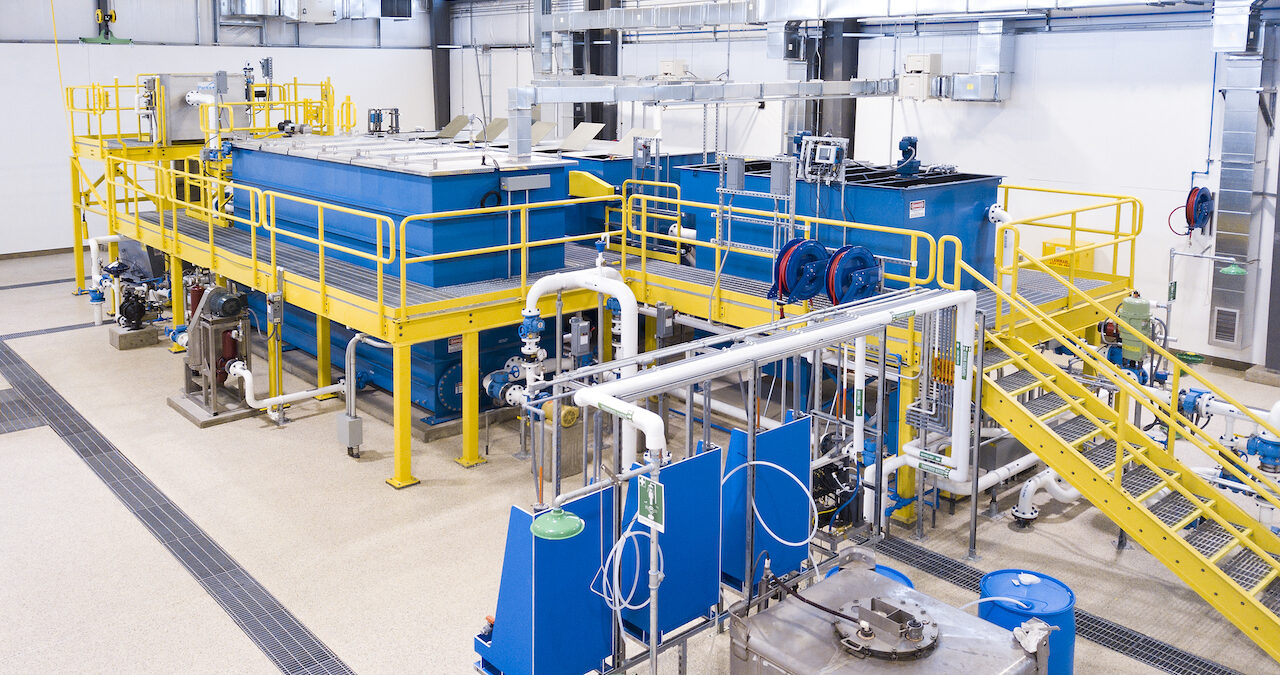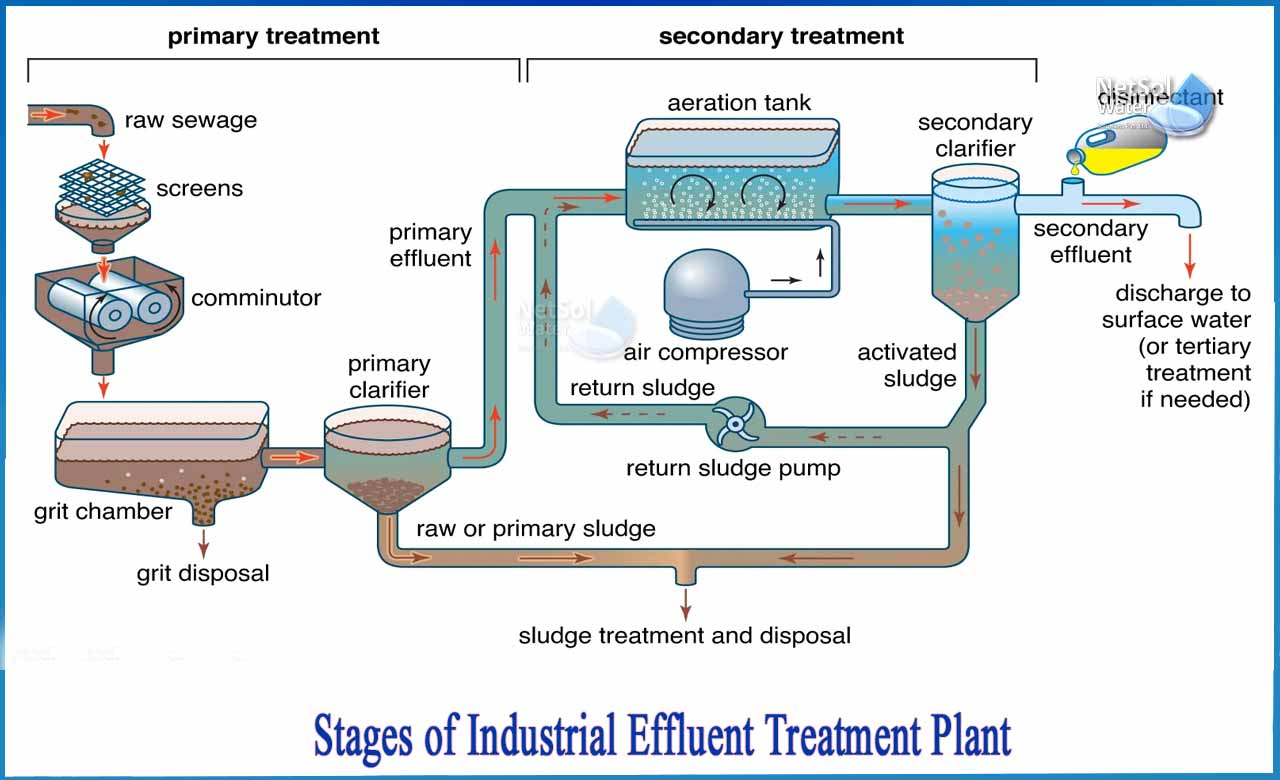Industrial Waste Water Treatment-- Improve Effectiveness with Custom-made Water Treatment Solutions
Trick Techniques in Industrial Waste Water Therapy Procedures
The treatment of commercial wastewater is an essential element of environmental monitoring, including a variety of strategies developed to mitigate the effect of contaminants. From the basic physical methods that divide solids to the sophisticated chemical and organic processes that target details contaminants, each strategy plays an important duty in accomplishing water top quality standards. Developments in modern technologies such as membrane filtering and progressed oxidation processes supply ingenious remedies for enhancing treatment effectiveness. Understanding how these approaches adjoin and their ramifications for sustainability elevates vital questions regarding the future of wastewater monitoring in sector.
Physical Treatment Techniques
Exactly how successfully can physical treatment techniques attend to the complexities of industrial wastewater? Physical treatment methods play a critical role in the preliminary phases of wastewater monitoring, concentrating largely on the elimination of solids and huge particulates. Methods such as filtration, sedimentation, and flotation protection are essential for reducing the concentration of suspended solids, thus enhancing the efficiency of succeeding treatment processes.
Sedimentation involves the gravitational settling of solids, enabling the splitting up of much heavier materials from the wastewater. This approach is especially effective in making clear water before biological or chemical therapies. Filtration, on the other hand, makes use of different media to capture particle matter, ensuring that smaller sized contaminants are gotten rid of. This method can be tailored to fit different sorts of commercial effluents, producing more clear effluent streams.
Furthermore, flotation protection techniques, which make use of air bubbles to lift put on hold solids to the surface for elimination, work in treating wastewater with high focus of fats, oils, and greases. On the whole, physical treatment approaches function as an essential very first action in the extensive monitoring of industrial wastewater, making sure that the lots on subsequent therapy phases is reduced and boosting overall therapy efficiency.
Chemical Treatment Techniques
While physical treatment methods prepared for effective wastewater administration, chemical therapy methods are vital for dealing with the extra complicated contaminants usually discovered in commercial effluents. These techniques make use of different chemical representatives to precipitate, counteract, or oxidize damaging compounds, making certain a more thorough elimination of toxins.
One common strategy is coagulation and flocculation, where chemical coagulants such as aluminum sulfate or ferric chloride are included to advertise the aggregation of put on hold fragments. This process improves solid-liquid splitting up, decreasing turbidity and boosting water quality. Furthermore, neutralization procedures are employed to change the pH of wastewater, making use of bases or acids to neutralize acidic or alkaline streams, specifically.
Oxidation-reduction responses play an essential function in derogatory natural contaminants and microorganisms. Chemical oxidants like chlorine, ozone, or hydrogen peroxide are used to damage down intricate natural compounds, making them less damaging or extra biodegradable. Advanced oxidation processes (AOPs) integrate several oxidation methods to improve contaminant elimination effectiveness.
Organic Therapy Procedures
The efficiency of wastewater therapy is significantly enhanced by biological therapy procedures, which harness the all-natural metabolic tasks of microbes to disintegrate natural issue and eliminate contaminants. Industrial Waste Water Treatment. These processes primarily involve anaerobic and cardio food digestion, each customized for certain sorts of wastewater
Aerobic treatment procedures utilize oxygen to support microbial development, advertising the malfunction of organic pollutants right into co2 and water. Common techniques include activated sludge systems, where aeration tanks help with the blending of wastewater with bacteria, and trickling filters, which urge biofilm advancement on media surfaces.
Alternatively, anaerobic therapy processes you could check here occur in the lack of oxygen, using anaerobic bacteria to decay natural matter, resulting in biogas manufacturing, a sustainable power click over here now source. Anaerobic digesters are frequently employed in commercial settings for this function, efficiently reducing the quantity of sludge while generating useful biogas.
The selection of an organic treatment approach depends on wastewater features, treatment objectives, and regulative criteria. The combination of organic processes in wastewater therapy not only boosts contaminant removal effectiveness however also advertises sustainability by reducing chemical use and sustaining resource recuperation.
Advanced Oxidation Processes

Typical AOP techniques consist of Fenton's photocatalysis, ozonation, and reagent. Fenton's reagent, a mix of hydrogen peroxide and ferrous iron, catalyzes the development of hydroxyl radicals, making it reliable for treating wastewater having phenolic compounds and various other recalcitrant compounds. Ozonation utilizes ozone as an effective oxidant, with the ability of breaking down a broad array of organic contaminants while simultaneously sanitizing the effluent. Photocatalysis uses light-activated catalysts, such as titanium dioxide, to improve oxidation responses and eliminate pollutants.
AOPs supply numerous advantages, consisting of lowered sludge production and the capacity to treat wastewater with high focus of natural toxins. The execution of AOPs calls for mindful factor to consider of functional parameters and cost-effectiveness, ensuring that these advanced techniques are appropriately integrated right into existing wastewater therapy systems.
Membrane Layer Purification Technologies

Microfiltration works for getting rid of suspended germs and solids, while ultrafiltration targets smaller sized natural particles and infections. Nanofiltration links the gap between ultrafiltration and reverse osmosis, efficiently eliminating natural substances and divalent ions. Reverse osmosis gives the highest level of filtration, made use of primarily for desalination and removing mono-valent ions.
Membrane layer technologies offer many advantages, consisting of reduced power consumption contrasted to typical therapy approaches, modular layout for scalability, and the possibility for water recuperation and reuse. Challenges such as membrane layer fouling and the demand for routine maintenance need to be addressed to ensure system efficacy. On the whole, membrane layer filtering innovations represent a vital part of modern industrial wastewater treatment approaches, advertising sustainability and resource conservation in water monitoring.
Final Thought
To conclude, industrial wastewater therapy utilizes a diverse selection of methods, including physical, chemical, organic, and advanced approaches. Each strategy plays a crucial role in properly attending to various impurities, improving water quality, and advertising resource sustainability. The assimilation of these methods cultivates a detailed treatment approach, guaranteeing that commercial effluents satisfy governing requirements while minimizing environmental influence. Continued innovations in these methods will certainly even more boost the effectiveness check and performance of wastewater treatment procedures in commercial settings.
The treatment of industrial wastewater is an essential aspect of environmental administration, involving a variety of strategies designed to alleviate the influence of impurities.How efficiently can physical therapy techniques resolve the intricacies of industrial wastewater?Advanced oxidation processes (AOPs) represent an innovative technique in commercial wastewater therapy, designed to effectively deteriorate organic contaminants that are commonly immune to standard therapy approaches (Industrial Waste Water Treatment).In verdict, commercial wastewater therapy uses a varied selection of strategies, consisting of physical, chemical, organic, and progressed techniques. Continued improvements in these methods will even more enhance the effectiveness and effectiveness of wastewater treatment processes in commercial setups